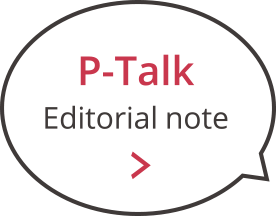Two researchers with PPC RDC/TSC were honored by academic conferences. Congratulations!
Here’s a bit more about why they were honored.
この度、PPCのRDD(RDC/TSC)に所属する二人の方の研究が、学会から栄誉ある賞を受賞しました。おめでとうございます!
今回は、お二人がどのような研究で受賞されたのか、少しご紹介いたします!

Nagao-san:
Explored the mechanism of deterioration of physical properties during heating and fuel swelling of POM, and won the Examiner’s Award of 26th National Symposium on Polymer Analysis and Characterization (2021) in The Japan Society for Analytical Chemistry!
永尾さん:
POMの加熱時と燃料膨潤時の物性低下のメカニズムを解明し、第26回高分子分析討論会(2021年)審査委員賞受賞!

POM, which is often used in automotive fuel parts, decreases its strength and other properties owing to swollen by fuel (only a small amount of fuel penetrates into the POM).
Nagao-san studied the mechanism of micro structural changes in the molded product during fuel swelling, and clarified that different changes occurred in the molecular structure under heating and fuel swelling, respectively.
Various analytical results have shown that different change happens in each phase of the POM polymer structure: three phases of an amorphous phase, a crystalline phase, and an intermediate phase.
Specifically, all phases increased its molecular mobility under heating, whereas only the amorphous and intermediate phases increased it under fuel swelling.自動車の燃料部品によく用いられるPOMは、燃料膨潤(わずかながら燃料がPOM内に浸透する)時、強度などの特性が低下してしまいます。
永尾さんは今回、燃料膨潤時の成形品の分子構造においてどのようなミクロな構造変化が起きているのかというメカニズムを研究し、加熱下と燃料膨潤下ではそれぞれ分子構造面では異なる変化が起きているということを解明されました。
今回様々な角度からの分析によって分かったのは、POMのポリマーの構造は非晶相・結晶相・中間相の3相構造になっていますが、このそれぞれの相で起きていることが違うということでした。
マレー語簡体字繁体字ドイツ語

Until now, there have been no research about comparing the micro structural changes between heating and fuel swelling, or about each phase’s change, including the intermediate phase which is particularly difficult to observe, in a multilateral manner. It led that Nagao-san received this award as an epoch-making discovery. Such elucidation of the mechanism of molecules can be expected to be useful for developing fuel swelling resistance grades and for improving the accuracy of defect prediction.これまでは、加熱下と燃料膨潤下を比較しながら見た研究事例や、とりわけ観察が難しい中間相も含む各相の変化を多角的に研究した事例がなかったため、画期的な発見であったとして、この度賞を受賞されました。
こうした分子のメカニズムの解明は、耐燃料膨潤性のグレード開発や、不具合予測の精度アップなどにも役立つことが期待できます。マレー語簡体字繁体字ドイツ語


Tsukada-san:
Developed material property evaluation technology that can contribute to high-precision prediction of residual stresses regardless of the shape of molded products, and won the poster award in 30th (2019) and 32nd (2021) Annual Meeting of the Japan Society of Polymer Processing!
束田さん:
成形品の形状に関係なく、残留応力の高精度予測に貢献可能な物性評価技術を開発
第30回(2019),第32回(2021)プラスチック成形加工学会年次大会のポスター賞受賞!
With the electrification of automobiles, the technology of “insert molding” in which metal and resin are integrally molded has become more widely used.
Metal does not shrink much when it is cooled, but resin shrinks more than metal, so the resin becomes a little tight when the insert molded product cools and solidifies.
Residual stress can accumulate in these points, which can eventually lead to resin breakage (e.g. thermal shock breakage). Therefore, grasping and managing this residual stress is a very important issue in insert molding.
自動車の電動化にともない、金属と樹脂を一体成形する「インサート成形」という技術がより広く活用されるようになりました。
金属は冷やしてもあまり縮まらない一方で樹脂は金属より縮むため、インサート成形品が冷えて固まる際、樹脂が少しつっぱっている状態になります。こうした箇所に「残留応力」という力が溜まり、それがいずれ樹脂の破壊(ヒートショック破壊など)につながる可能性があります。そこで、この残留応力の把握や管理が、インサート成形においては非常に重要な課題です。


Although there was already a technology to measure residual stress in products after molded, Tsukada-san’s research approaches the real-time measurement of residual stress in the injection molding process.
In fact, two years ago, Tsukada-san developed a technology to measure the residual stress in the process of solidifying injection-molded resin in real time and quantitatively, and received an award from the Japan Society of Polymer Processing. At that time, the technology could only be used for molded products in regular shapes, but this time he also developed a new material property evaluation technology that can predict residual stresses with a high degree of accuracy in any shape, and received the award again.
成形後の製品内の残留応力を実測する技術は既にありましたが、束田さんの研究では射出成形過程での残留応力をリアルタイムに計測するというアプローチをされています。
実は2年前にも束田さんは、射出成形した樹脂が固まる過程での残留応力をリアルタイムかつ定量的に計測する技術を開発し、プラスチック成形加工学会から賞をいただいています。その際は定型の成形品にのみ使える技術だったのですが、今回はさらに、どのような形状のものでも精度高く残留応力を予測可能になる新たな物性評価技術を開発し、再度の受賞に至りました。


With this technology, we can contribute to more efficient and effective product design for our customers. We can also assist our customers in proposing ways to cool molded products (how much force should be applied in the mold while cooling them, at what speed should the products be cooled, etc.).
In addition, the technology to simulate residual stress with high accuracy not only makes it possible to increase the reliability and life span of our customers’ products, but also reduces the need for extra thickness of customers’ products for safety, enabling the more appropriate use of resins, thus contributing to the effective use of resources.
この技術によって、お客様のより効率的・効果的な製品設計に貢献できます。また当社からお客様へ、成形品の冷やし方(金型中のどの部分でどの位の力を加えて冷やすとよいか、どういったスピードで冷やしていくのが最適か等)をご提案する際にも役立ちます。
さらに、残留応力を精度高くシミュレーションできるということは、お客様の製品の高信頼化・長寿命化が可能になることはもちろん、安全を見て必要以上の厚みを持たせること等が減り、より適切な樹脂の使用ができることにもなりますので、資源の有効活用にも寄与できるものといえます。


Congratulations again, Nagao-san and Tsukada san!
永尾さん、束田さん、改めておめでとうございます!














